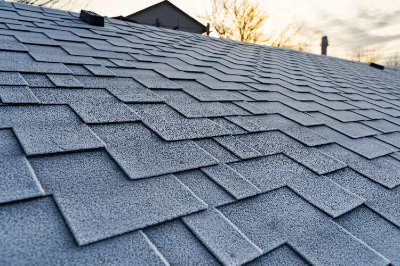What Is Asphalt Roofing?

Asphalt roofing is a type of waterproofing sheet made from materials like waterproof paper, impregnated with asphalt. It is commonly used on the roofs and walls of buildings and houses to prevent rainwater from infiltrating, protecting structures from potential damage. While often concealed from view, asphalt roofing plays a critical role in maintaining the integrity of a building.
Uses of Asphalt Roofing
Asphalt roofing finds application throughout various types of buildings. Here are some examples of its common uses:
- Residential roofing materials
- Roofing for high-rise buildings
- Roofing materials for buildings of public importance
- Wall materials for residential buildings
Principle of Asphalt Roofing
Asphalt roofing comprises a waterproof paper infused with asphalt. The waterproof properties of the asphalt itself, along with the performance of the waterproof paper, work together to resist rainwater infiltration. In addition to waterproof paper, non-woven fabrics and felt may also be used in the composition of asphalt roofing.
Similar products to asphalt roofing include modified asphalt roofing and polymer-based roofing. However, asphalt roofing is favored more frequently due to its cost-effectiveness.
Additional Information About Asphalt Roofing
1. Asphalt Roofing and Roofing Components
Asphalt roofing, in conjunction with roofing components, forms a protective barrier against rainwater infiltration. In residential construction, asphalt roofing is installed on the roof sheathing without gaps. The installation process typically involves the use of a large stapler known as a tacker.
After the installation of asphalt roofing, roofing components are added to complete the roofing system. In cases where leaks occur, the issue is often associated with age-related deterioration of the asphalt roofing material.
2. Types of Roofing
Roofing materials vary, and several types are available to suit different requirements. Here are examples of different roofing types:
-
Asphalt Roofing
Commonly used waterproofing paper made by saturating a base material such as paper or non-woven fabric with straight asphalt. The typical lifespan of asphalt roofing is around 10 years, providing a decade of leak protection for newly constructed buildings.
-
Modified Rubber Asphalt Roofing
This roofing material mitigates the deterioration seen in traditional asphalt roofing by blending rubber and synthetic resins with asphalt, enhancing durability.
-
Adhesive Layer Roofing
Designed to eliminate the need for nails that can lead to leaks, adhesive layer roofing adheres directly to the roof without additional fastening materials, making it suitable for complex roof shapes.
-
Polymeric Roofing
This type of roofing primarily consists of synthetic resins, offering high performance when used appropriately.
-
Waterproof Paper Roofing
Waterproof paper roofing is impermeable to external moisture while allowing internal moisture to escape. It is often used in wood construction, which is prone to mold, extending the lifespan of the building.
3. How to Select Roofing
Choosing the right roofing material is crucial and should be based on factors such as lifespan and suitability for the building type. Roofing materials that resemble tiles can be reused, while non-reusable materials require replacement. Therefore, selecting the appropriate roofing material is essential, taking into account the building type and expected duration of occupancy.